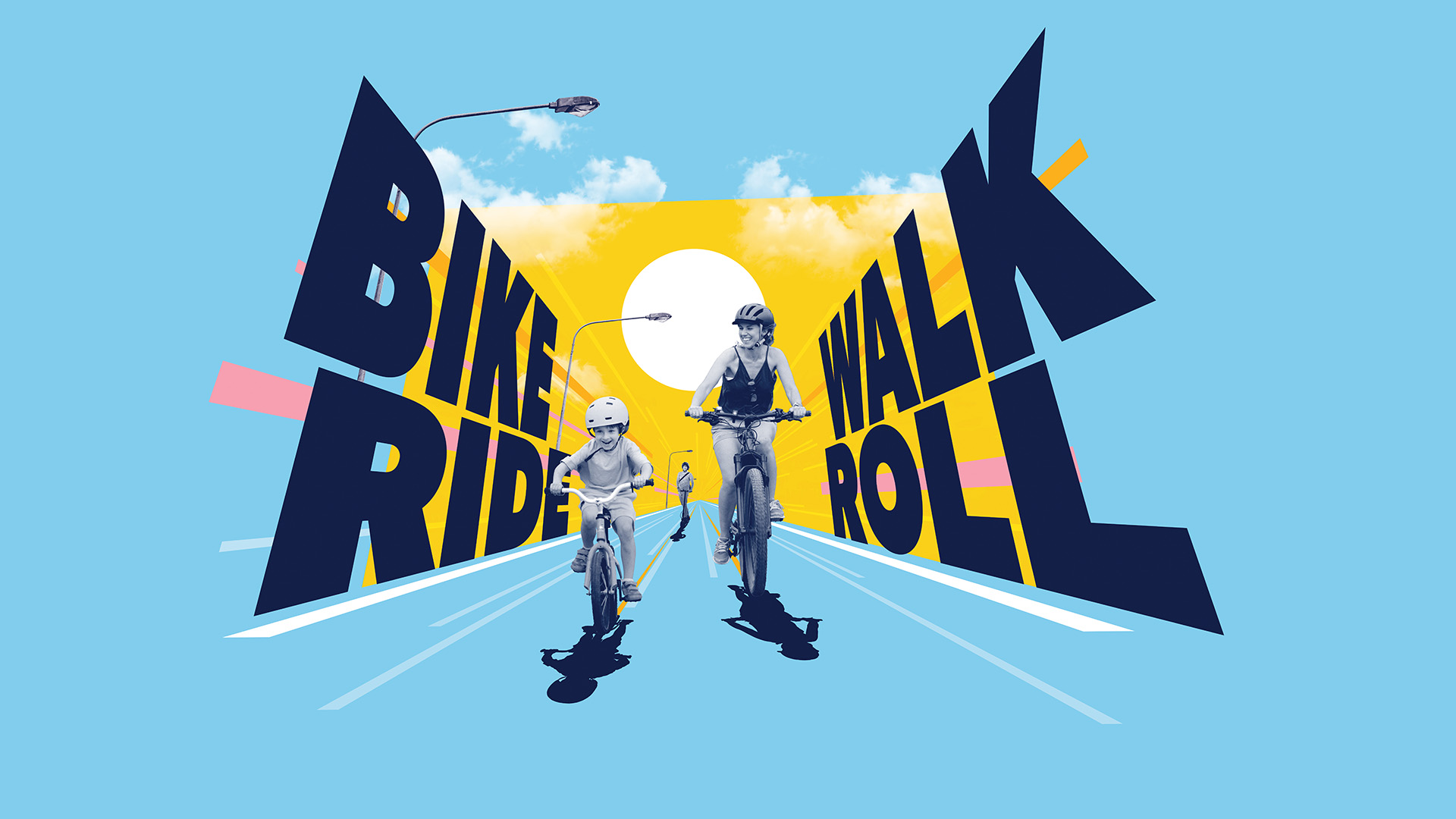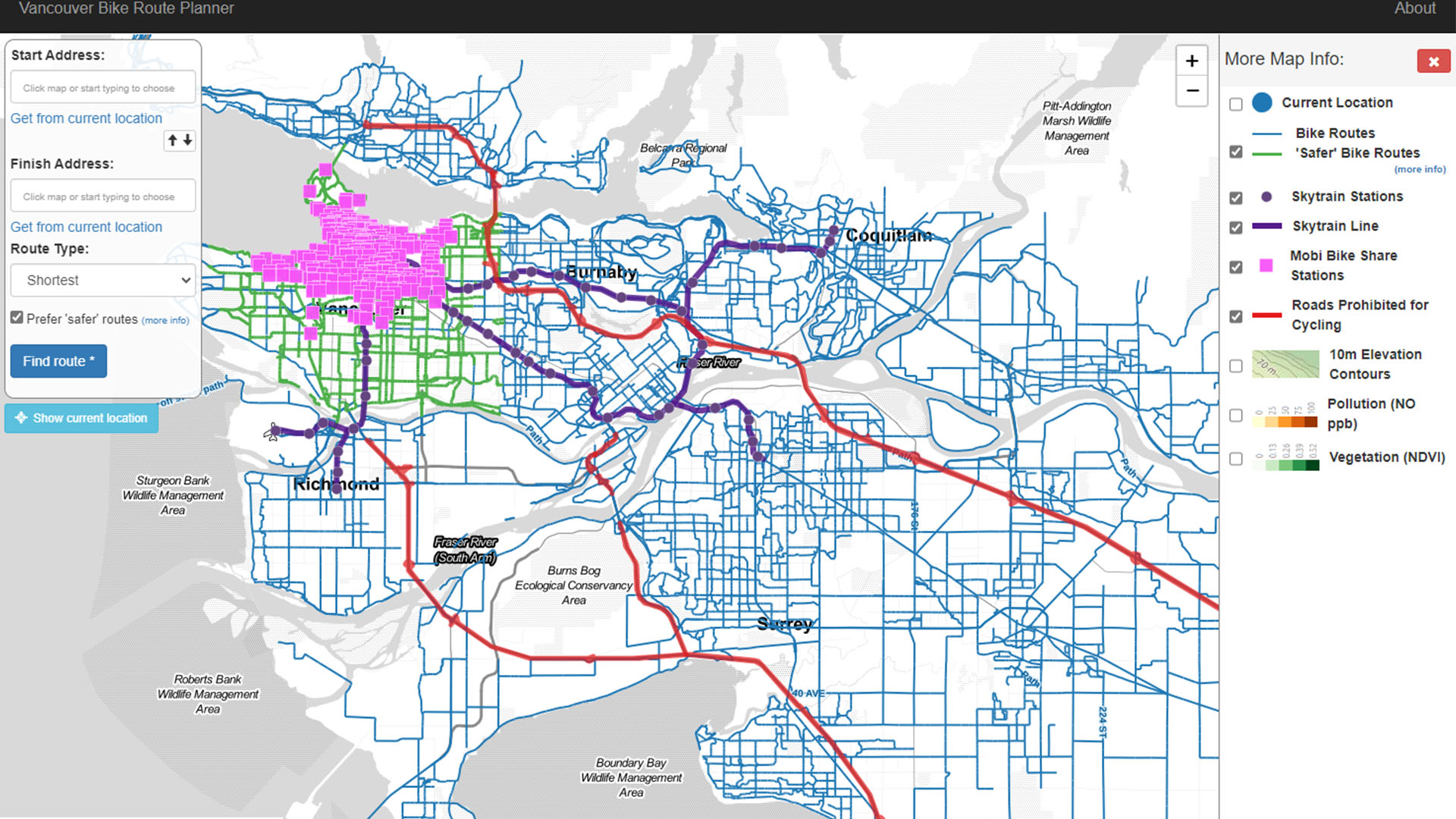
Although cycling is often used for leisurely rides along our various bike paths, Vancouverites are less likely to cycle during their commutes – in fact, only 2.3 per cent of commuters cycled across the region in 2019. Not only is it great exercise and a natural way to boost energy, but it’s also one of the most sustainable ways to get around.
With HUB Cycling’s Go By Bike Week in full swing to support you along your cycling commute with their celebration stations (free maintenance, snacks, coffee, and prizes along your commute), there’s no better time than now to hop on and ride to work!
Today, we’ll show you some things you need to know about cycling so you can easily get started with bike commutes!
1. Plan your trip
Often no two days are the same when it comes to any commute. That’s why it’s smart to plan ahead, so you’re ready for anything. Here are a few things to consider when planning:
- Explore the best options for you with our Metro Vancouver Cycling Maps! They include key connections to transit hubs, locations of bike lockers and parkades, and indicate areas with steeper hills. They also show the comfort levels of each route based on how separated it is from traffic.
- Check the forecast! You may want to bring an extra layer if it’s going to get colder later, or a jacket if it starts raining.
- If you’re commuting when it gets dark, be sure to bring reflective gear, and be well-lit.

2. Choose your level of comfort
There are different bike lanes based on comfort. Here are the types, starting with the most protected (away from traffic):
- Protected bike lanes are physically separated from vehicle traffic, and often give riders the most peace-of-mind
- Painted bike lanes are separate painted lines from vehicle traffic, dedicated to bikes.
- Shared use lanes are roads that are shared with vehicle traffic, generally the least comfortable for riders.
In commutes toward Downtown Vancouver, there are a few key paths that are protected bike lanes for most of your ride:
- The Arbutus Greenway is a north-south route that goes along a decommissioned rail corridor
- The Central Valley Greenway is an east-west route that follows under the SkyTrain’s Millenium Line, curving through Burnaby and ending in New Westminster
- The BC Parkway is a diagonal route (from southeast towards Downtown Vancouver) that follows under the SkyTrain’s Expo Line, ending at the King George branch of the line
- The Seaside Greenway is an east-west route connecting the western end of Vancouver with the Stanley Park Seawall path, following Burrard Inlet and English Bay
3. Travel further by pairing cycling with transit
You don’t need to ride your bike the entire way, you can ride it partway. When you combine cycling with transit, you can travel further!
Our transit system is bike friendly. The bus, SeaBus, SkyTrain (with certain restrictions during peak hours), and West Coast Express trains are ready to move you and your bike in any situation!
One registered, you can also park your bike at Bike Parkades throughout the region, allowing you to easily connect to the SkyTrain, West Coast Express, RapidBus, and other express bus routes. There’s also the bikesharing service, Mobi by Shaw Go.
4. Check your ABCs
Just like how our SkyTrains receive routine maintenance, bikes also need to be kept in good condition for a smooth ride. Before every ride, check your ABC’s — that’s air pressure (on your tires), brakes, and chains/cables. This will help you reduce breakdowns while getting to work!
Check out HUB Cycling’s guide on basic bike maintenance to learn more about keeping your ride in tip-top shape.
5. Ask about end-of-trip facilities
There’s a growing number of buildings that have “end of trip” facilities for cyclists — places where you can park your bike, shower, and change so you can be ready for the day. Check with the building manager on your options.
What are you waiting for? Grab that bike and hit the road next time you head to work!






The main barriers to bike commuting are lack of infrastructure and bike theft, which aren’t addressed here.